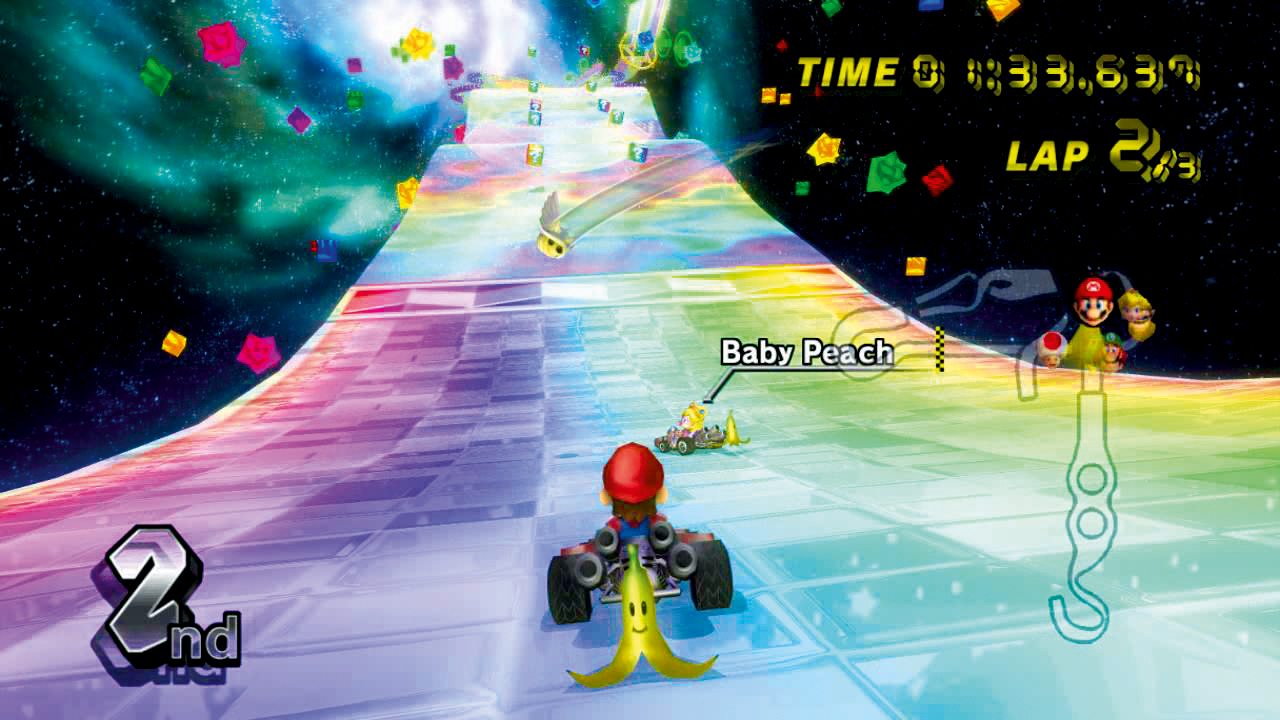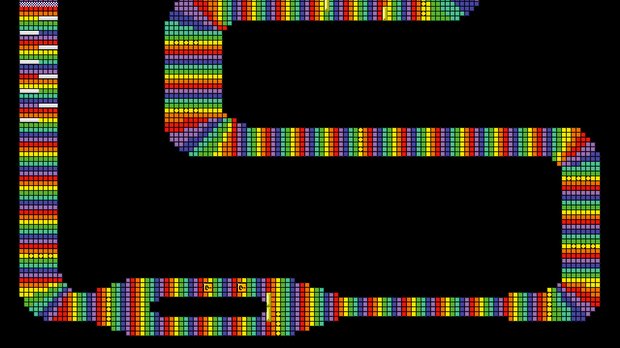Rainbow Road: the deadly ribbon that has entranced generations of racers
Humans have long seen rainbows as signifiers of promise, be it a fabled pot of treasure to claim, the cessation of Biblical-scale ecological cleansing, a bridge to other worlds, or simply that the sun will be waiting when the rain finally clears. After 23 years and eight console games, the Mario Kart series carries its own implicit promises, not least of which is that there will always be at least one Rainbow Road to test you among its track list. The reward at this rainbow’s end is a coveted one and, true to at least one legend, it’s usually a shiny golden prize: the Special Cup.

In 1992’s Super Mario Kart, Nintendo laid down Rainbow Road’s fundamentals: a track that is both visual set-piece and ultimate challenge. From the earliest moments you put tyre on tarmac in Mario Circuit, the designers have begun to play with the idea of not hemming you onto the course and the critical path, but it isn’t until Rainbow Road that you’re suspended over black void without a single barrier and left at the fickle mercy of a jostling pack of racers and deadly Thwomps. Kicking off a lasting aesthetic legacy, meanwhile, the ground is mesmerising, a shimmering parade of technicolour that contrasts strongly against the sucking gulf of space beyond. SNES Mode 7 graphics offered a wondrous faux-3D perspective, too, but its limitations left this Rainbow Road pan flat, and the series’ purest test of driving skill. It’s short, taut, and unique among its peers for having no counterpart, which is also a fitting description for the game credited with sparking off the kart-racing genre.
But reinvention has proved key to the track’s evergreen popularity, and everyone has a favourite version. A radical overhaul for Mario Kart 64 brought a dash of stardust and neon, but more crucially the additional N64 processing power allowed the road to shift to semi-translucent and wending, stomach-churningly rising and falling through 3D space. Yet in a retrograde step, star barriers came plastered to every edge, all but eliminating the possibly of unforced falls. So early on, the track’s reputation for extreme challenge threatened to spin out, even if vicious Chomps and lengthy turns provided some of the toothy handling requirements fans expected. It wouldn’t last: from GBA’s Super Circuit on, a sizeable portion of every track has been left open to treacherous falls into space, ensuring steady employment for Lakitu and his fishing rod.
Every Rainbow Road has its gimmicks, though, Nintendo exhibiting its usual flair for recycling settings but sustaining interest with one-shot twists. Super Circuit’s has a branching path, a thin strip of boost-pad-lined road a short hop away from the main artery to entice the unskilled and unlucky to their doom. Double Dash’s track siphons players up a giant suction tube, providing a moment of respite amid the growing chaos of shells, stars and Bullet Bills. DS’s Rainbow Road turns an often figurative rollercoaster into a thrill ride with a vertical loop and corkscrew, whereas Wii’s undulating ribbons play into its trick system, and its track also takes in a figure of eight where daredevils can dice with a reset for yet more stunt boosts. And while almost all Rainbow Roads are set in outer space, Mario Kart 7’s was the first where you could leave tyre tracks on lunar soil. Mario Kart 8 took a more futuristic approach, the games antigravity features feeling perfectly at home on the split paths winding themselves around a space station.

At various points in its history, the road itself has become a mirror, a pearlescent strip with oil-slick rainbows rather than the hard light of 64, but a Rainbow Road has always reflected the title in which it appears. GameCube’s Double Dash infamously represented a shift towards item dominance, so falling stars become Starmen on impact with its track, while judiciously placed lumps mess with shell trajectories as recompense. Wii’s drive for mainstream appeal meant a control scheme designed to channel sympathetic racing leans, leaving its Rainbow Road to compensate for the imprecisions of early motion controls by widening sections of track to unprecedentedly generous proportions. Mario Kart 7, meanwhile, blends homage and wanderlust to electric effect, its final test bringing back the coins and Chomp threats of its earliest ancestors, yet lengthening out the course to one long lap that takes in more sights and racing styles than ever.
Rainbow Road is a mirror, but it’s also an amplifier, its unforgiving nature heightening the frustrations and triumphs that are the hallmarks of this series. There is little more infuriating than the Spiny Shell that finds you at an inopportune moment and flips you over the edge into space, adding track-reset insult to chart-position injury. But there is also no leap of faith more satisfying than the carefully planned one that lets you circumvent a portion of the road, with exploits across the years briefly transmogrifying Rainbow Road into something more akin to Impossible Road.
Twenty-three years on, Rainbow Road and Mario Kart are now eternally entwined. Even out of context, one immediately recalls its counterpart, a fact Nintendo knows and uses sparingly in its crossovers. Rainbow Road is the zenith of every Mario Kart, held aloft miles above its competition, and a fitting send-off to each incarnation. In 2007, Mario Galaxy’s designers found out space is a brilliant playground for Nintendo’s greatest mascot, but even that was merely a rediscovery of the promise Super Mario Kart established when it dared to take us to infinity and back in 1992.
Sign up to the GamesRadar+ Newsletter
Weekly digests, tales from the communities you love, and more
Read more from Edge here. Or take advantage of our subscription offers for print and digital editions.
Edge magazine was launched in 1993 with a mission to dig deep into the inner workings of the international videogame industry, quickly building a reputation for next-level analysis, features, interviews and reviews that holds fast nearly 30 years on.



